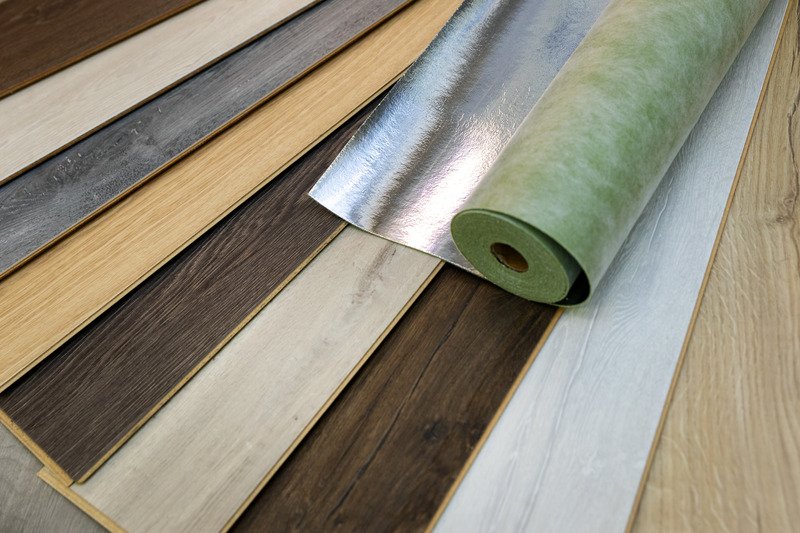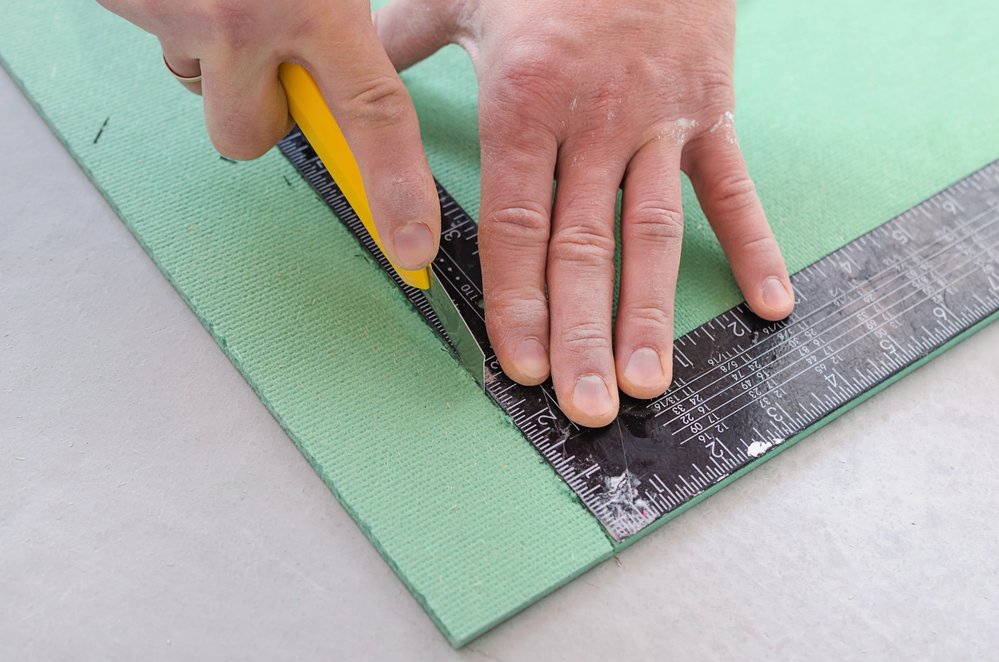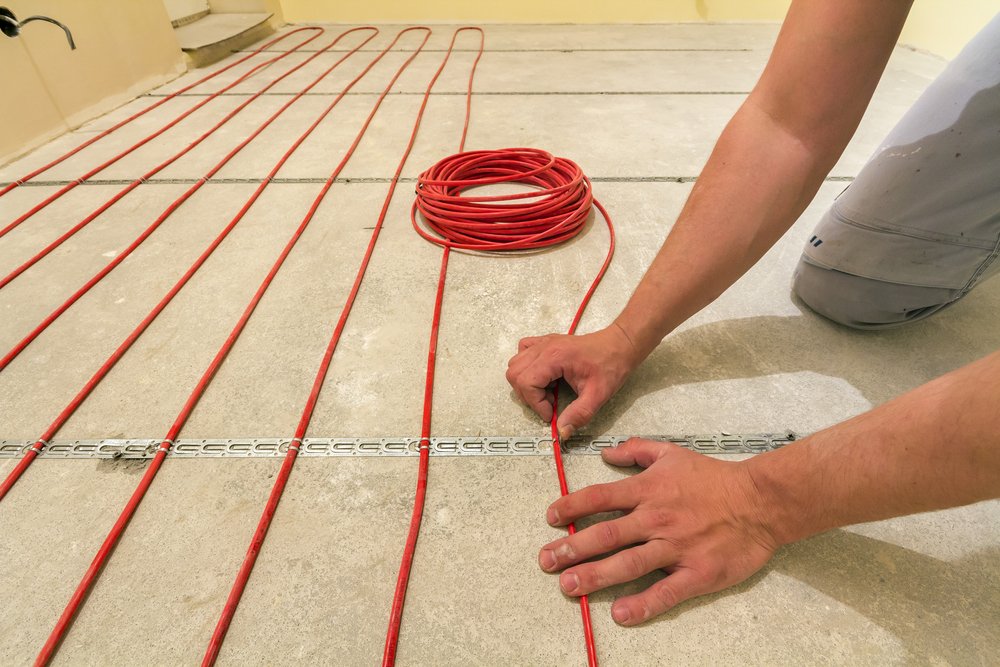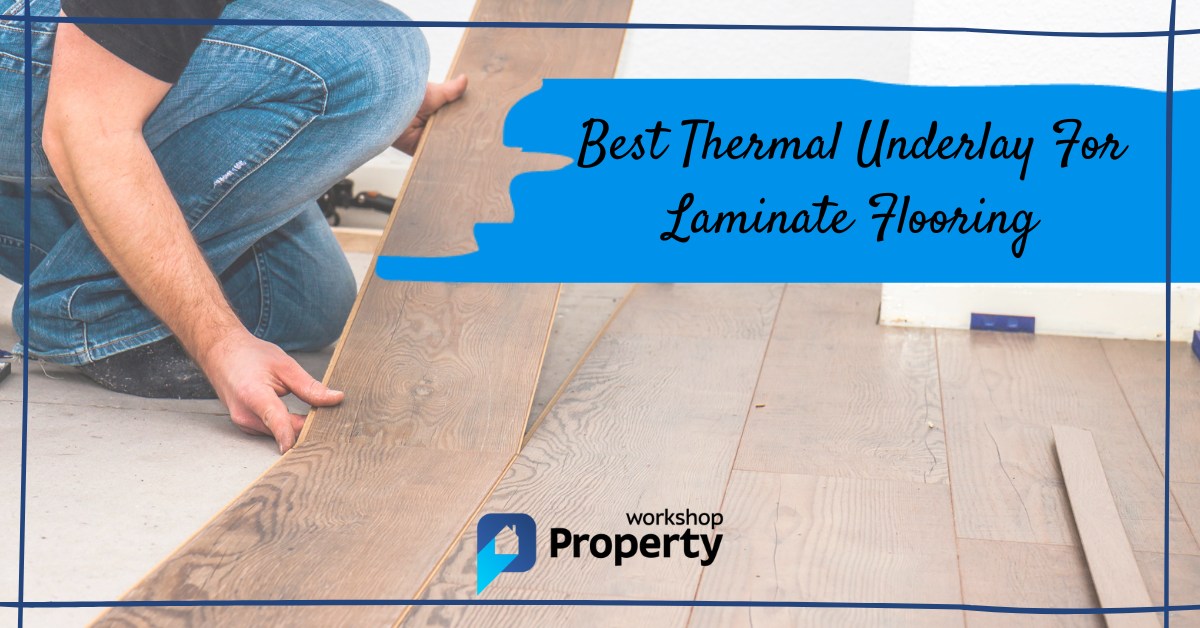Property Workshop is proudly reader-supported. When you buy through links on our site, we may earn a small Amazon affiliate commission but this does not affect the price you pay. Learn more here.
I remember boarding out my loft by laying boards on quilt insulation. Not only did I lose lots of headroom, but I also created a bouncy castle! So when it came to laying laminate flooring in my lounge, I investigated all the options.
This guide comes from many hours of researching and testing the best thermal underlay for laminate flooring.
Why Use An Underlay?

Underlay is necessary on most substrates to provide a smooth surface on which to lay the final flooring layer (e.g. laminate, carpet, tiles, etc.).
The type of underlay depends on what flooring is going on top. For example, the underlay must be solid for small tiles to prevent differential movement. The same applies to sheet vinyl.
Carpet usually has a thick, soft underlay to provide more comfort and to make it last longer.
Laminate flooring requires an underlay that provides a little bit of movement without turning your floor into a bouncy castle.
Pro Tip: Always lay the underlay at a right angle to the longest wall in the room. This way, the joints in the laminate won’t coincide with the joints in the underlay.
Acoustic and Thermal Properties
Laminate is hard and transmits sound to the rooms below, so you need something that soaks up the sound.
According to Home Building & Renovating, noise is a significant stressor in the home. Reducing sound transfer is essential, whether it’s noise between rooms in a house or between flats in multi-occupancy buildings.
Being thin, laminate also allows heat to pass through, so underlays prevent heat from escaping.
Best Type of Underlay for Laminate Flooring

Underlays come in roll (polyethene foam) or board (XPS) form. Your final choice partly depends on what lies beneath but, more importantly, what you’re trying to achieve.
Let’s compare the pros and cons of these two materials:
Polyethylene (PE) Foam Rolls
| Pros | Cons |
|---|---|
| Excellent acoustic performance (high resilience) | Poor thermal insulation (lower TOG value) when compared to XPS |
Expanded Polystyrene (XPS) Boards
| Pros | Cons |
|---|---|
| Excellent thermal insulation (high TOG value) | Poor acoustic performance (low resilience) |
Another consideration is water vapour, which may be present due to moisture in the substrate.
Concrete and screed must be completely dry before laying the laminate. You can read more about this in our guide to screed drying times.
Water vapour can also be the result of activities below the floor. Kitchens and bathrooms generate enormous moisture, finding its way into the laminate substrate.
For this reason, manufacturers typically attach rolls of underlay to a damp-proof membrane (DPM) or other types of vapour barrier. Solid boards repel moisture due to their makeup.
Other Considerations
Below are the other things to consider when purchasing thermal underlay for laminate floors:
Cost
When comparing costs between different underlay materials, check the area and evaluate the price per square metre.
A roll typically covers 15m2, whereas a pack of boards covers only 6m2 or less.
Underfloor Heating

You don’t want your underlay to block the heat from mats or pipework, so look for an underlay with a low TOG (Thermal Overall Grade) value.
Sometimes, professionals refer to TOG as thermal resistance or R-value, and converting from one to the other is easy. Just remember this: 1 TOG = R-value of 0.1 m²K/W.
Be extra careful when choosing an underlay for wet underfloor heating systems. Always check the manufacturer’s instructions.
Irregularities in the Substrate
Foam rolls tend to be better than boards at dealing with abnormalities in the substrate.
The same resilience that makes foam rolls great for sound attenuation also makes them good at dealing with minor bumps and hollows in concrete.
Best Thermal Underlay for Laminate Flooring in 2024
After many hours of testing and comparing the best thermal underlay on the UK market, below is our top pick for 2024:

Royale Sonic Gold Comfort Underlay
- Roll size: 1m x 15m
- Thickness: 5mm
- Excellent noise reduction properties
Made by Newlife Contracts (Flooring) Ltd, Royale Sonic Gold is one of the top underlays for use with laminate flooring.
This underlay is made from closed-cell PE foam and includes a gold foil vapour barrier. A single roll covers an area of 15m2.
At 5mm thick, the foam evens out most subfloor imperfections, and you can easily cut it with a knife or scissors.
The low thermal resistance (0.9 TOG rating) makes this an excellent choice for underfloor heating, allowing most of the heat to pass through.
This underlay also has good sound-deadening properties, providing a 22dB drop in noise level.
The double-integrated vapour barrier offers a 200mm “over-under” overlap with the foam, giving Royale the best vapour barrier possible without taping the joints. This feature makes it ideal for use over screed or concrete floors.
Pros & Cons
| Pros | Cons |
|---|---|
| Excellent acoustic performance, noise reduction, and impact resistance. | The gold film has little slip resistance, making it challenging to lay. |
| The double-integrated DPM provides excellent resistance to moisture rising from the substrate. |
Technical Specification
| Product | TOG | Noise Reduction | Thickness | Cost/m2 | Rating out of 10 |
|---|---|---|---|---|---|
| Royale Sonic Gold | 0.9 | 22dB | 5mm | ££ | 9.5 |
Final Thoughts
We believe Royale Sonic is the best thermal underlay on this occasion due to its overall sound and thermal insulation performance. It also works extremely well with underfloor heating and offers excellent value when compared to other leading brands.
Check out our laminate flooring cost guide for more helpful laminate flooring tips.

